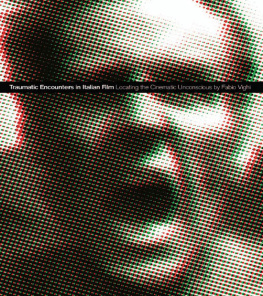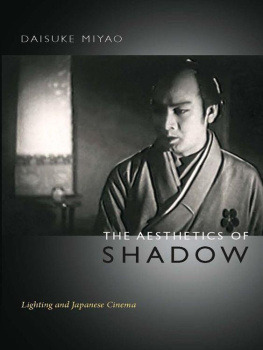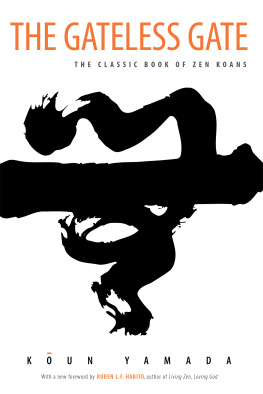
Locating Heisei in Japanese Fiction and Film
This book provides the first interdisciplinary examination of the popular fiction and film of the lost decades of Japans Heisei period (19892019).
Presenting original analysis of major Heisei writers, filmmakers, and manga artists, the chapters examine the work of Urasawa Naoki, Kurosawa Kiyoshi, Murakami Haruki, and Shinkai Makoto, among others. Through the work of these cultural figures, the book also explores the struggle to define the history of Heiseithree decades of economic stagnation, social malaise, and natural disaster. In particular, it explores the dissonance between the dominant history of Japans recent past and the representation of this past in the popular imagination of the period. In so doing, this book argues that traumatic events from the years leading up to Heisei complicate the narration of a cohesive sense of history for the period, requiring works of fiction and film to explore new connections to the past.
Incorporating literary and film theory to assess the works of culture, Locating Heisei in Japanese Fiction and Film will be useful to students and scholars of Japanese culture, society, and history.
Marc Yamada is Associate Professor of Interdisciplinary Humanities in the Department of Comparative Arts and Letters at Brigham Young University, USA. He received his PhD in Japanese Literature and Culture from the University of California, Berkeley, USA.
Routledge Contemporary Japan Series
76Japans Colonial Moment in Southeast Asia 19421945
The Occupiers Experience
Satoshi Nakano
77Animism in Contemporary Japan
Voices for the Anthropocene from post-Fukushima Japan
Shoko Yoneyama
78Political Sociology of Japanese Pacifism
Yukiko Nishikawa
79Zainichi Korean Women in Japan
Voices
Jackie J. Kim-Wachutka
80Japanese Culture Through Videogames
Rachael Hutchinson
81Social Trauma, Narrative Memory and Recovery in Japanese Literature and Film
David C. Stahl
82Cultural and Social Division in Contemporary Japan
Bridging Social Division
Edited by Yoshikazu Shiobara, Kohei Kawabata and Joel Matthews
83Locating Heisei in Japanese Fiction and Film
The Historical Imagination of the Lost Decades
Marc Yamada
For more information about this series, please visit: http://www.routledge.com/Routledge-Contemporary-Japan-Series/book-series/SE0002
Locating Heisei in Japanese Fiction and Film
The Historical Imagination of the Lost Decades
Marc Yamada
First published 2020
by Routledge
2 Park Square, Milton Park, Abingdon, Oxon OX14 4RN
and by Routledge
52 Vanderbilt Avenue, New York, NY 10017
Routledge is an imprint of the Taylor & Francis Group, an informa business
2020 Marc Yamada
The right of Marc Yamada to be identified as author of this work has been asserted by him/her/them in accordance with sections 77 and 78 of the Copyright, Designs and Patents Act 1988.
Every effort has been made to contact copyright-holders. Please advise the publisher of any errors or omissions, and these will be corrected in subsequent editions.
All rights reserved. No part of this book may be reprinted or reproduced or utilised in any form or by any electronic, mechanical, or other means, now known or hereafter invented, including photocopying and recording, or in any information storage or retrieval system, without permission in writing from the publishers.
Trademark notice: Product or corporate names may be trademarks or registered trademarks, and are used only for identification and explanation without intent to infringe.
British Library Cataloguing-in-Publication Data
A catalogue record for this book is available from the British Library
Library of Congress Cataloging-in-Publication Data
Names: Yamada, Marc, author.
Title: Locating Heisei in Japanese fiction and film : the historical imagination of the lost decades / Marc Yamada.
Description: Abingdon, Oxon ; New York, NY : Routledge, 2020. | Includes bibliographical references and index.
Identifiers: LCCN 2019028965 | ISBN 9780367345501 (hardback) | ISBN 9780429327834 (ebook) | ISBN 9781000712193 (adobe pdf) | ISBN 9781000712315 (mobi) | ISBN 9781000712438 (epub)
Subjects: LCSH: Japanese fictionHeisei period, 1989History and criticism. | Motion picturesJapanHistory.
Classification: LCC PL747.85 .Y36 2020 | DDC 895.63/5dc23
LC record available at https://lccn.loc.gov/2019028965
ISBN: 978-0-367-34550-1 (hbk)
ISBN: 978-0-429-32783-4 (ebk)
Typeset in Times New Roman
by codeMantra
For M, K, and S
My three favorite allies
Japanese personal names follow the countrys convention of putting the surname first.
The Heisei period came to an end on April 30, 2019, with the abdication of Emperor Akihito from the Chrysanthemum Throne, which he had assumed when his father, Hirohito, died in 1989. At that point, however, another event marking the end of Heisei had already occurred, albeit with much less fanfare. In July 2018, Asahara Shk, the former leader of the apocalyptic religious group Aum Shinri Ky, was put to death, along with 12 of his accomplices, for his role in the 1995 Tokyo subway gas attacks: an event that killed several passengers, injured scores more, and captivated the Japanese public for several years. It is not difficult to identify a causality between these two events: Asaharas execution, carried out shortly after the announcement of Akihitos abdication, was part of the national plan to tie up loose ends, leaving the traumas of Heisei behind, as the nation eagerly looks forward to a new era.
Indeed, the Heisei period has come to be known as the Lost Era (ushinawareta jidai) in recent Japanese history. It is often characterized by its three decades of economic stagnation, social malaise, and natural disaster. When the experience of the lost decade (ushinawareta j-nen) of the 1990s extended into the millennial period, the consensus was that the 20-year episode should be renamed the lost decades to account for the persistence of the economic and social problems that accompanied the recession in the early 1990s (Funabashi and Kushner 2015, xx). Now that Heisei is coming to an end, it has become clear that post-bubble malaise has endured throughout the 2010s, compounded by the traumas of natural disaster (the 2011 earthquake and tsunami) and the effects of global climate change, which have wreaked havoc in Japan in recent years. It should be noted, however, that the March 2011 disaster centered in Fukushima created an opportunity for writers and critics to reevaluate contemporary Japanese history through other paradigms, including the nuclear bombings of 1945, over-development in the postwar period, and other issues. For this reason, this study will largely focus on works of Heisei fiction produced before the 3/11 disaster.












